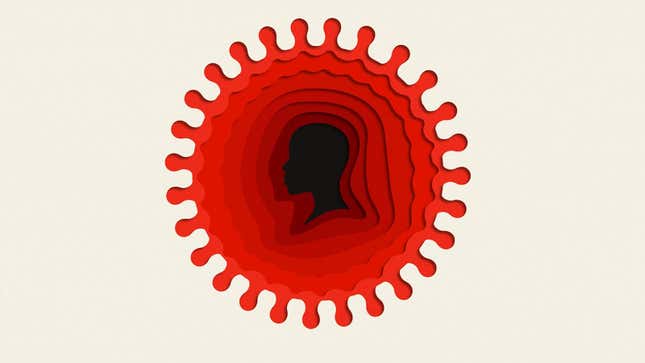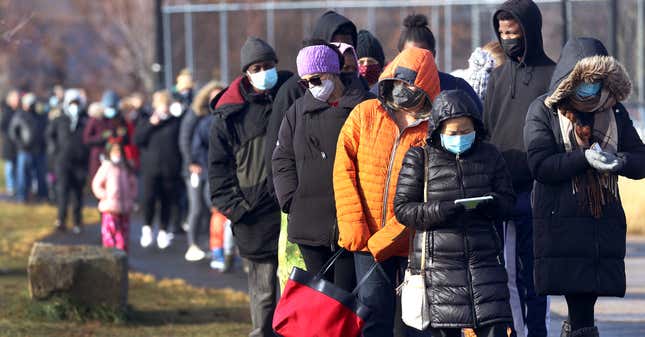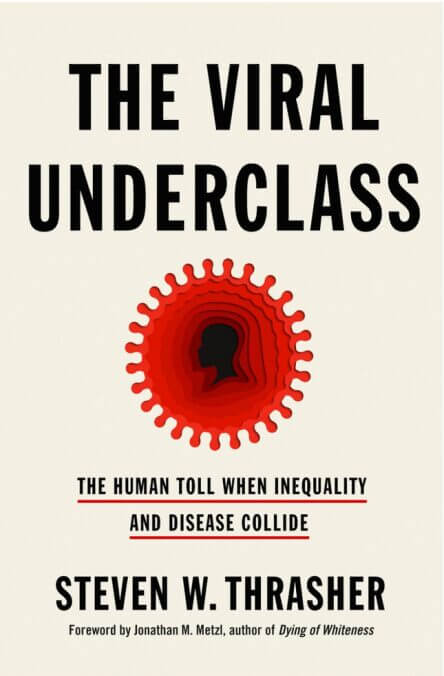Our Public Health System Created a ‘Viral Underclass’
Journalist Steven Thrasher argues that viruses—like HIV and covid—can teach us how to approach care in a way that isn't "steeped in me getting mine first."
BooksEntertainment

When Steven Thrasher started reporting on Michael Johnson, the Lindenwood University student known to some as “Tiger Mandingo” who had been charged with (and later convicted of) “recklessly infecting another with HIV,” Thrasher’s editor at Buzzfeed, Mark Schoofs, told him, “I think you’re going to work on this for a long time.” In the eight years since Thrasher’s first article about Johnson, “How College Wrestling Star ‘Tiger Mandingo’ Became An HIV Scapegoat,” he’s published several more. And now he’s folded Johnson’s trial into a much larger project about systemic inequity’s devastating effects on public health: his newly released book, The Viral Underclass. Schoofs couldn’t have known how right he was.
Thrasher attributes the coinage of the term “viral underclass” to Sean Strub, the writer-activist who founded the HIV-interest magazine POZ. Strub wrote in 2011 that stigma derived from government discrimination toward people with HIV (such as HIV criminalization, as in the case of Johnson) resulted “in the creation of a viral underclass of persons with rights inferior to others, specially in regard of their sexual expression.” Expanding this idea to encapsulate HIV and other viruses like covid and hepatitis C, Thrasher has assembled a theory of the viral underclass that can, as he writes, “help us think about how and why marginalized populations are subjected to increased harms of viral transmission, exposure, replication, and death.” In a Zoom interview with Jezebel last week, he said the concept of the viral underclass “can be thought of as a way to see why certain people are affected by viruses repeatedly, and sometimes very different viruses that have different characteristics.”
Thrasher synthesizes recorded data with original reporting in his wide-ranging examination of how our society’s ills exacerbate those of our bodies. He looked at, for example, racial disparity in HIV and covid. Black women face much higher rates of HIV diagnosis than white women. Black people (as well as Latinx people) are more than as likely to be hospitalized with covid than white people, according to Mayo Clinic data. Thrasher additionally connects other types of disparities with public health: Prisoners and jail inmates were nearly three times more likely and more than four times more likely, respectively, to report having at least one disability, according to a statistic he quotes from the Department of Justice.

“A viral underclass helps us understand who is in these pathways and then what the effect of being infected by one of those viruses does to people economically,” he said. This underclass is not the basis of a set caste system; Thrasher argues that given the high cost of healthcare in the U.S., a certain downward mobility is a reality for many. “Lots of this stuff could happen to anyone, and suddenly you could be in the viral underclass. If someone gets long covid, that’s going to have a debilitating financial effect on their life and impact their class status,” he said. This is similarly true for monkeypox (too recent of a mass threat to be featured in The Viral Underclass), which requires weeks of quarantine and comes at a steep cost for those without jobs that offer fully paid sick leave.
-

-

-

-

-

-

-

-

-

-

-

-

-

-

-

-

-

-

-

-

-

-

-

-

-

-

-

-

-

-

-

-

-

-

-

-

-

-

-

-









































